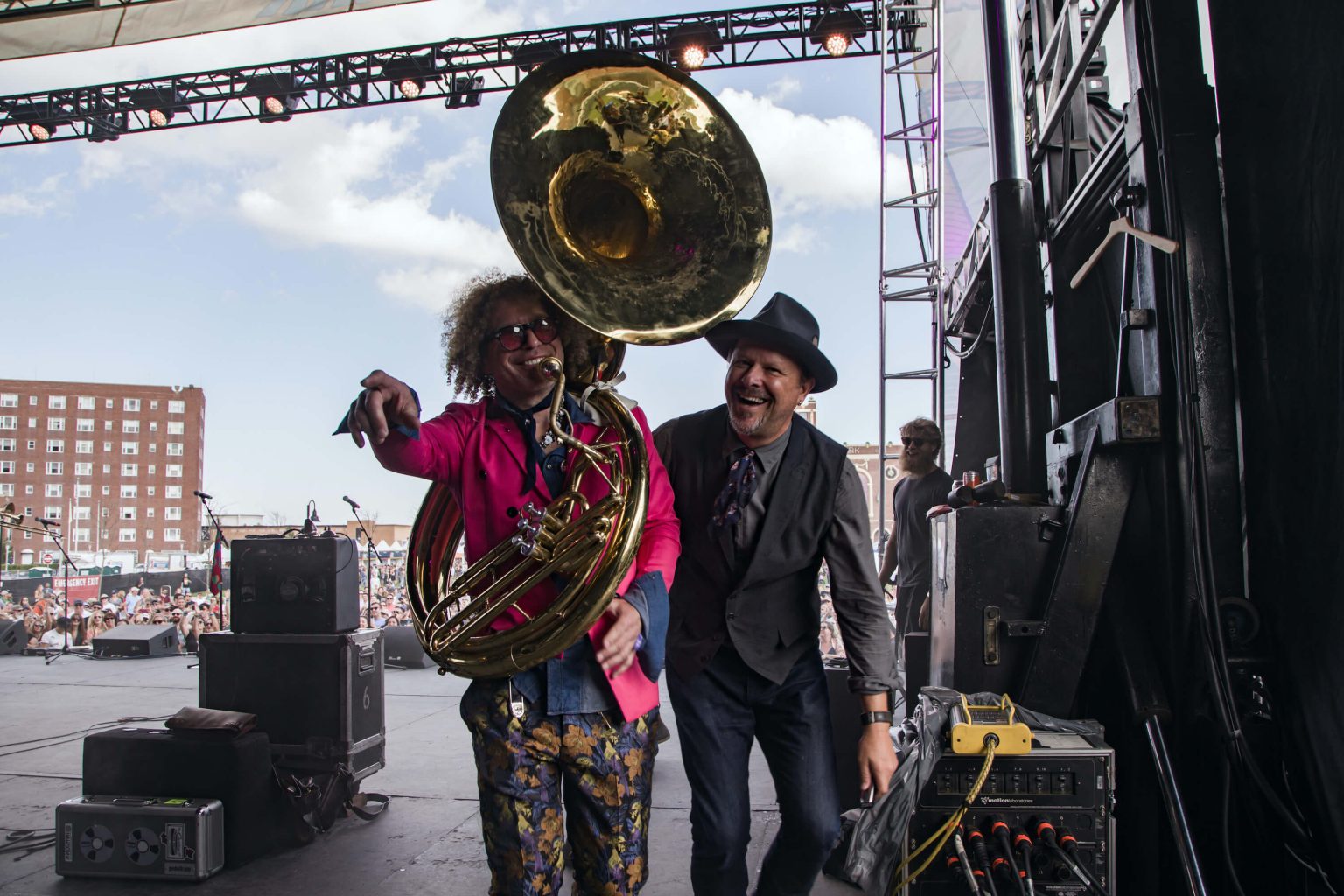Photographer and director Danny Clinch loves music. He loves it so much that he photographs it, films it, and plays it. He’s earned his stripes as rock and roll’s premier photographer, official backstage photographer for the Grammys, and 3x Grammy-nominated filmmaker. Clinch has photographed the gamut from Johnny Cash and John Prine, to Nas and Tupac.
His work has appeared on hundreds of album covers and in publications like Vanity Fair, Spin, Rolling Stone, GQ, Esquire, and more. He’s directed music videos for Willie Nelson, Tom Waits, Pearl Jam, Foo Fighters and Dave Matthews, among others; and he now has four published books under his belt: Discovery Inn, When the Iron Bird Flies, Motor Drive, and Still Moving (foreword by Bruce Springsteen).
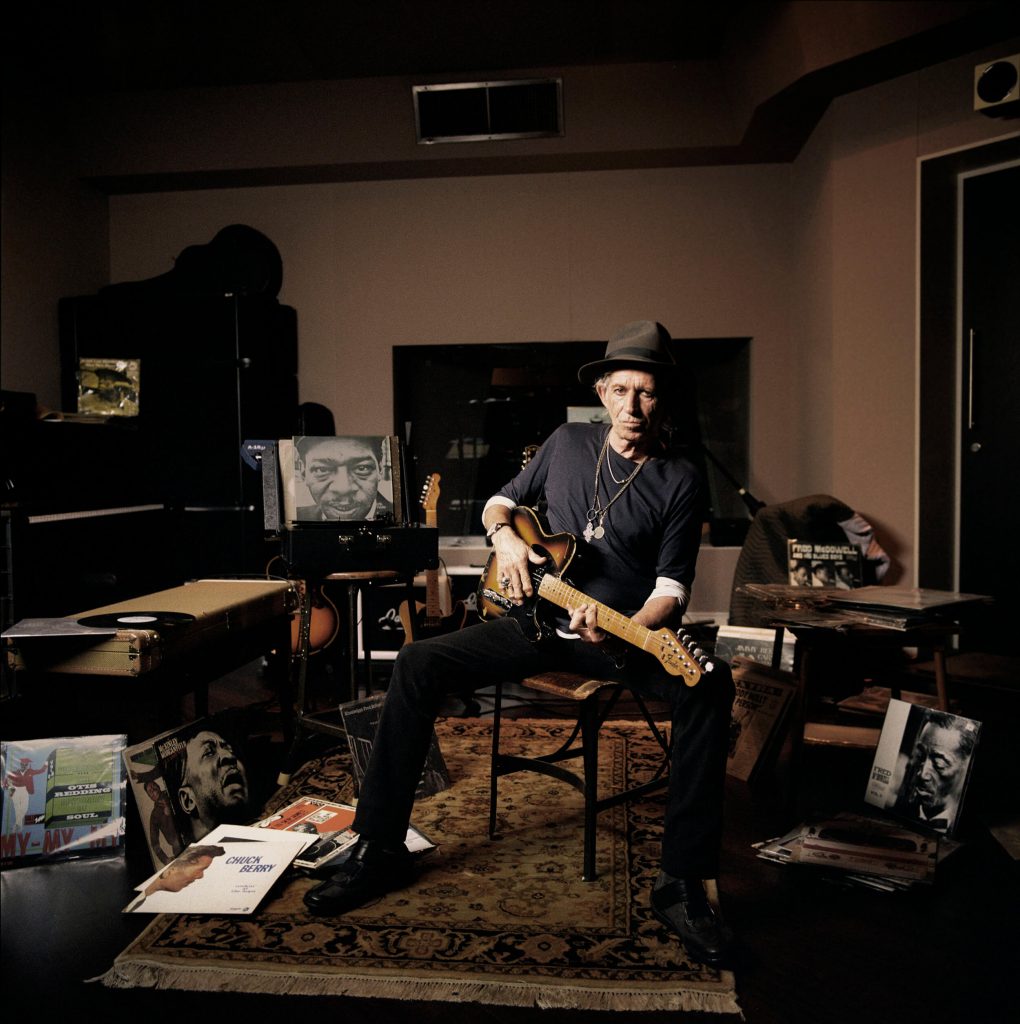
For Clinch, whose famous archives are engraved on our global cultural memory, a passion for music came around the same time a passion for the art of photography did. His first musical memory was hearing “Hey Jude” as his mother, a nurse, got ready for work. “I would say that I have always been surrounded by music at home even as a little kid,” he tells me. “My folks were into a lot of ‘50s music and always listening to Ritchie Valens and Johnny Cash and Elvis. I always loved music. I was also an art kid. I liked to draw, and my mom was always taking photographs. I just kind of gravitated towards the camera when I was younger and started taking photographs myself.”
Clinch is quite proud of the different genres he gets to work with, having been behind the lens during some pretty important album sessions. “I did Milk Cow Blues, the Willie Nelson record that came out around the same time as (Johnny Cash’s) Solitary Man,” he recalls. “Johnny Cash was actually a session I did for a guitar magazine that was taken in ‘94. I sent the photographs as a gift to Rick Rubin when he made the first American Recordings. Then when they made Solitary Man I got a call from Rick Rubin asking if they could use it for the album cover.”
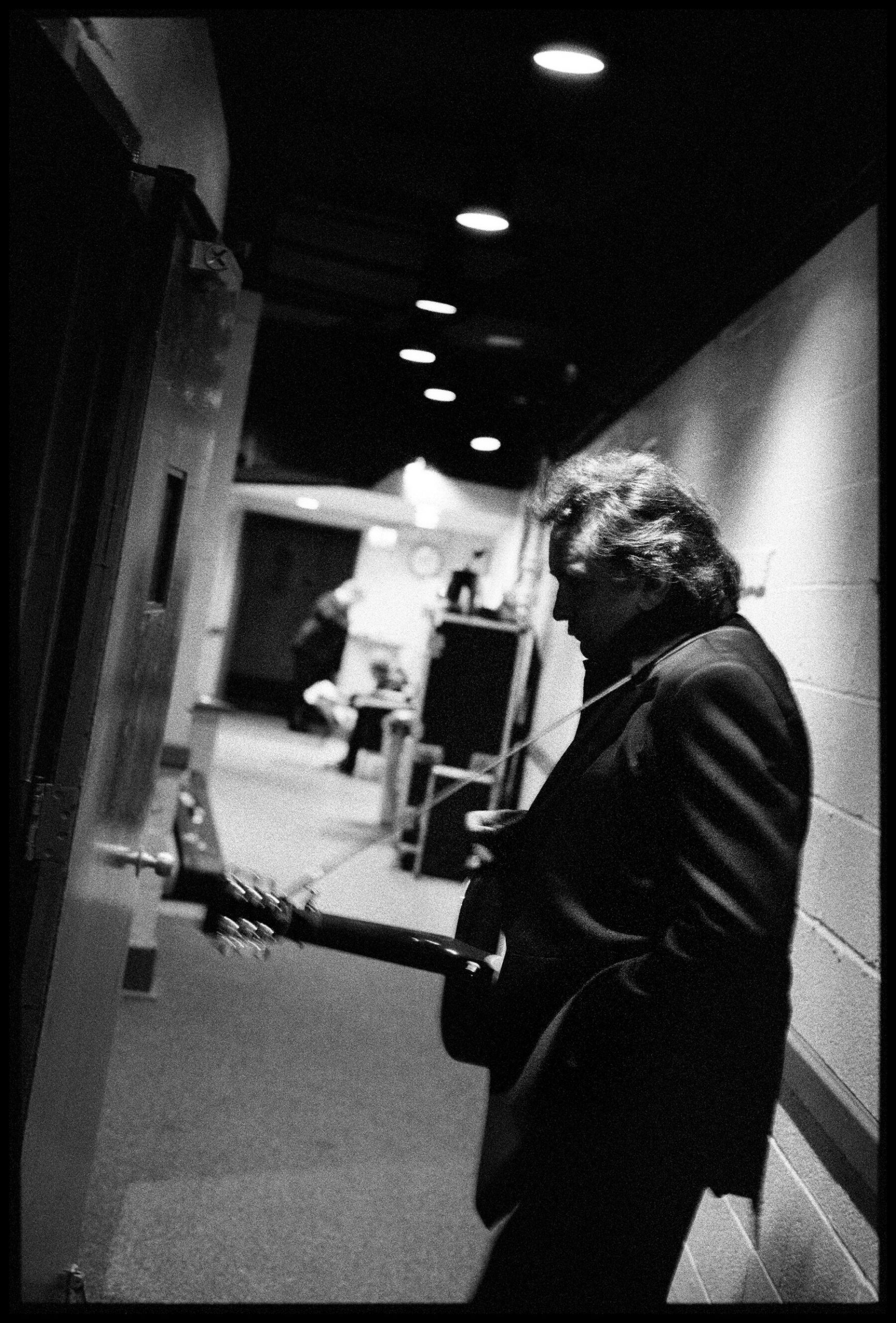
A longtime friend and chronicler of Bruce Springsteen, Clinch has done seven of the Boss’s album covers. “I just did the new Bruce Springsteen album cover called Letter to You. We were supposed to do a shoot for the album, and then we had COVID hit. We decided to look through the photos that I had taken already. We had a real casual session while he was doing the broadway shows in New York City. We met in Central Park to photograph. We had a crazy snow storm and he showed up, wandering around Central Park. He ended up using those images for the album packaging.”
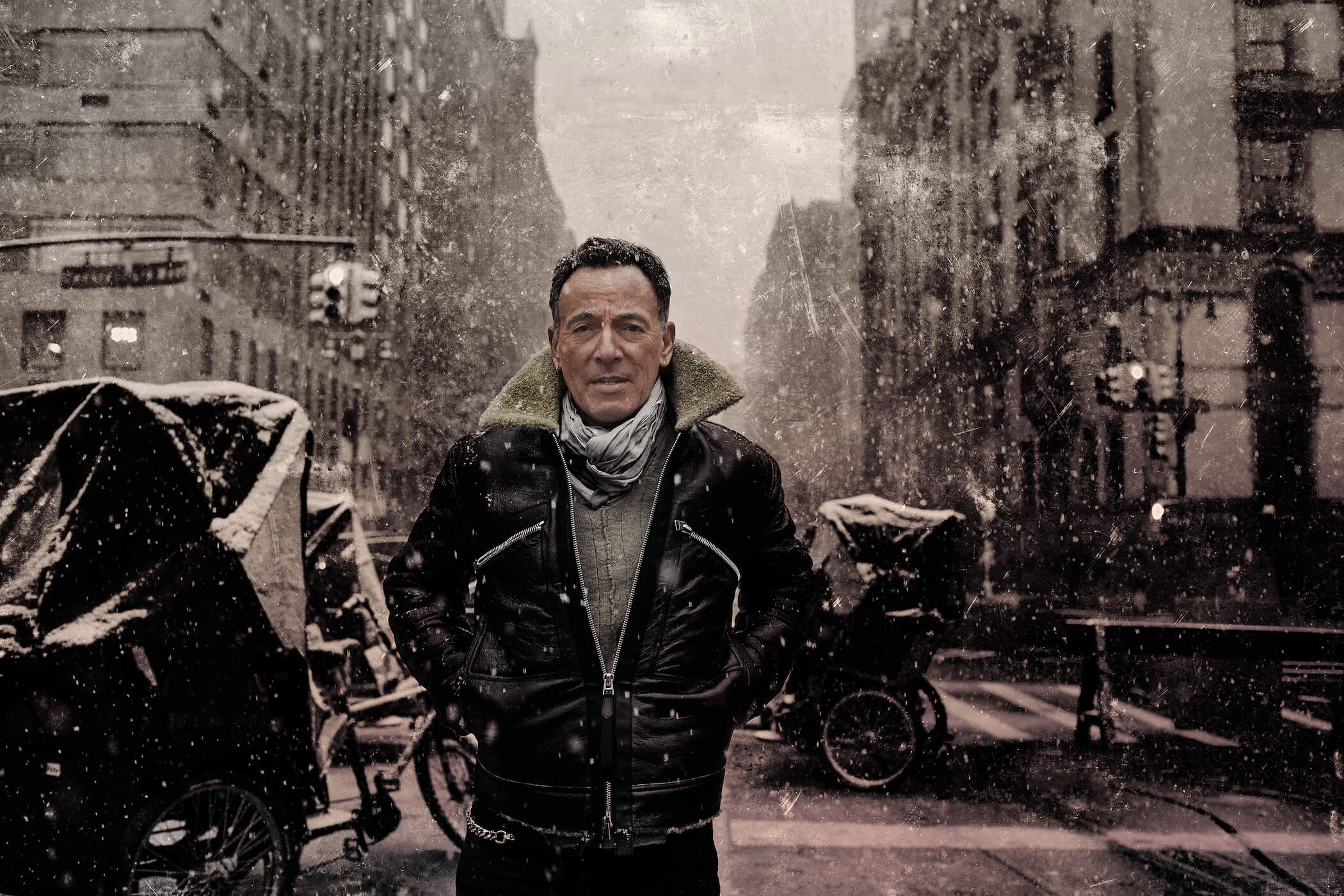
By being spontaneous and open-minded, Clinch taps into the multidimensional personality of each of his sui generis subjects. While Tupac was changing his shirt during a photo shoot in 1993, Clinch noticed his tattoos and suggested they try something without a shirt on. He also made use of simple lighting and a simple backdrop, an approach he learned from one of his heroes, Irving Penn. That particular image of a bare-chested, tattooed 21-year-old Shakur became the most widely used photo of the rapper and one of Clinch’s most iconic — making the cover of Rolling Stone when Tupac died in 1996.
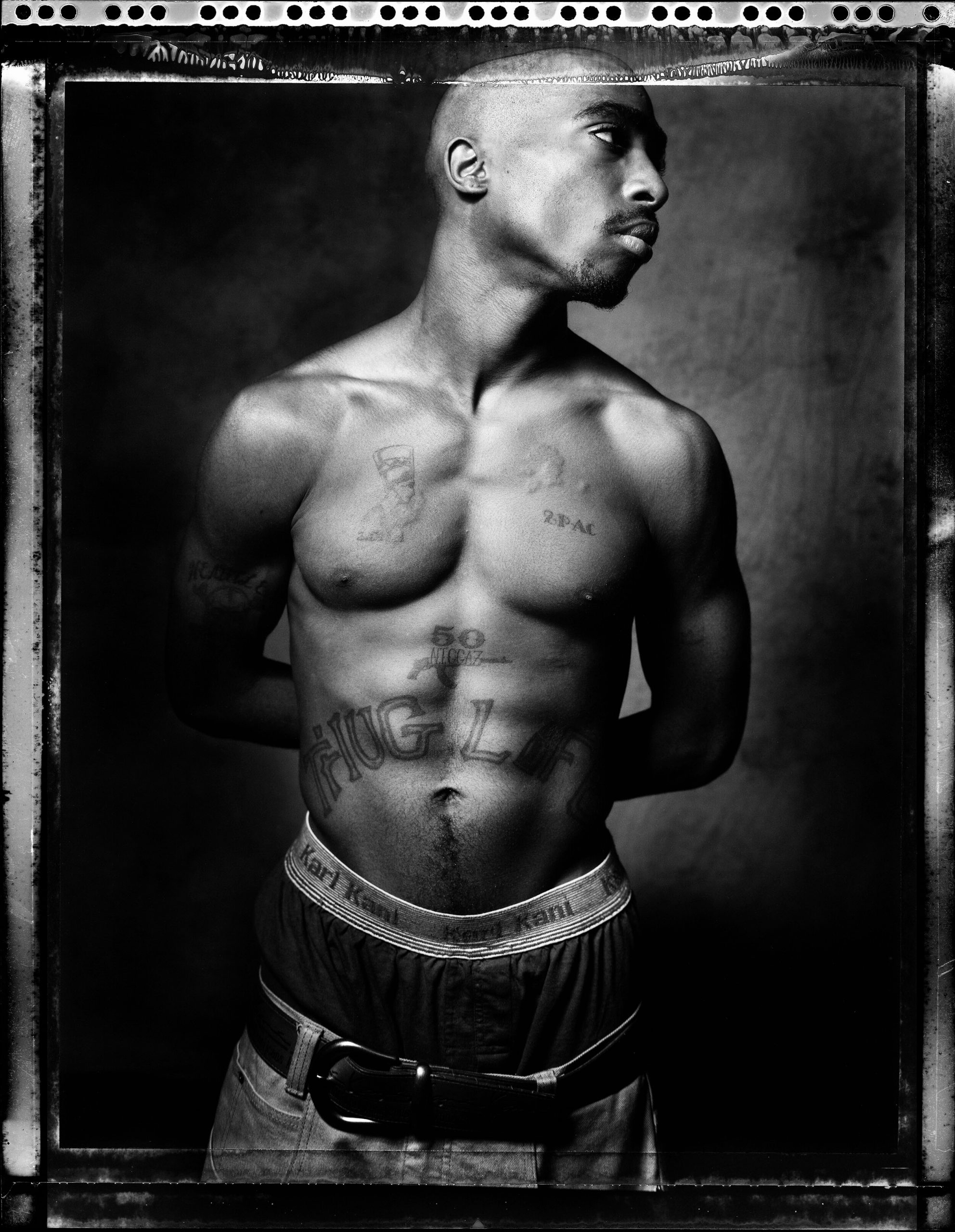
“It’s always a collaboration between the artist and myself, I believe. I think some people get their own ideas on everyone and they’re really directing, very strongly, the shoot. Tupac, specifically, understood how he looked in front of the camera. And he was able to really participate in a subtle way that was still really strong. A lot of times, for me, it’s respecting people and having a relaxed atmosphere when I’m shooting. It’s like a no-drama thing, and I just feel really lucky to be photographing musicians and creative people and hanging out with them. I love people, and I love the life experience that I get from meeting these really interesting, creative people all the time.”
Among these creative people are the blues greats he’s photographed over the course of his 30-plus year career: Junior Wells, BB King, James Cotton, Jimmy Rogers, Buddy Guy. He used to frequent Washington Square Park for harmonica lessons from Adam Gussow — best known for his long partnership with Mississippi-born guitarist Sterling “Mr. Satan” Magee (as the blues duo Satan and Adam).
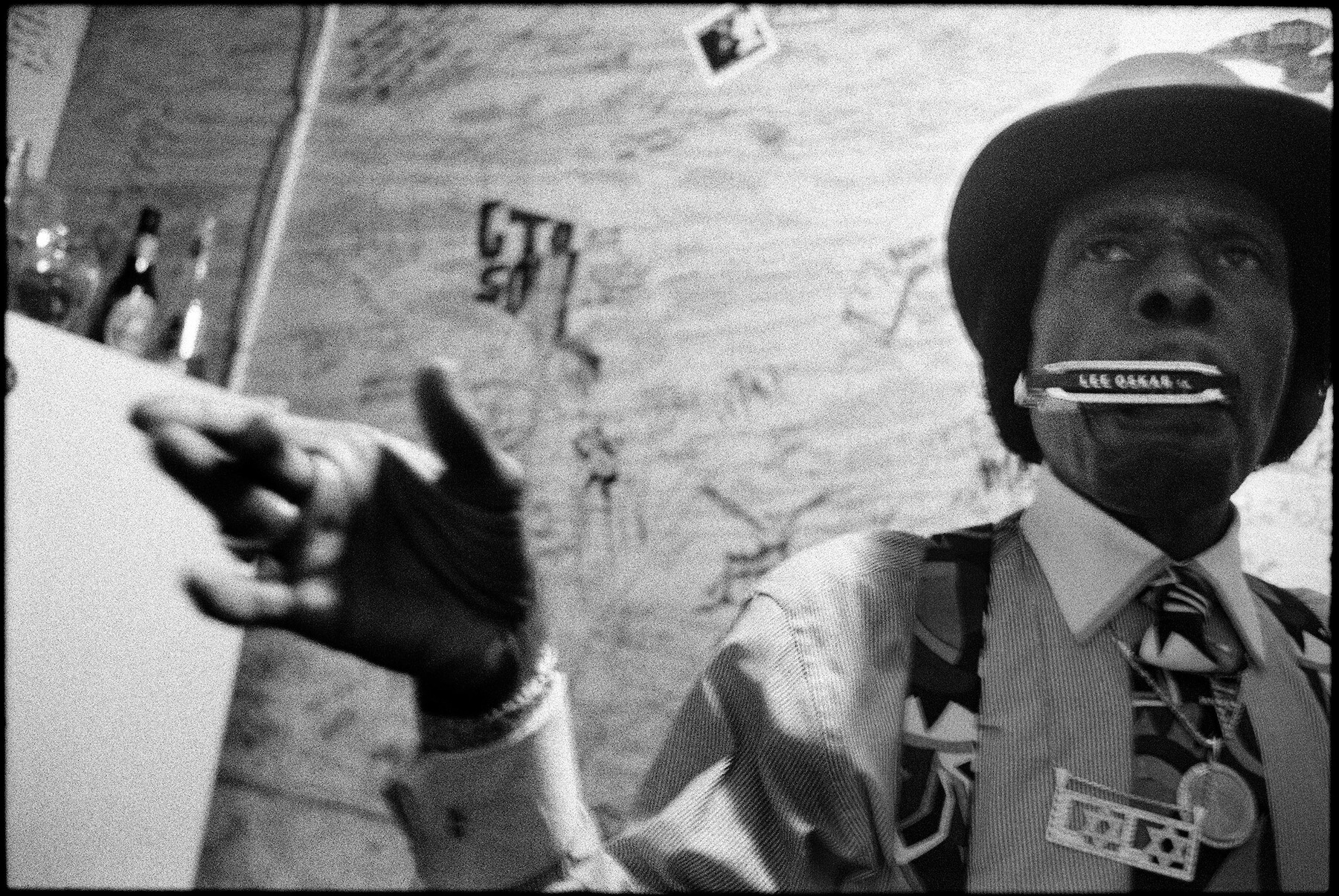
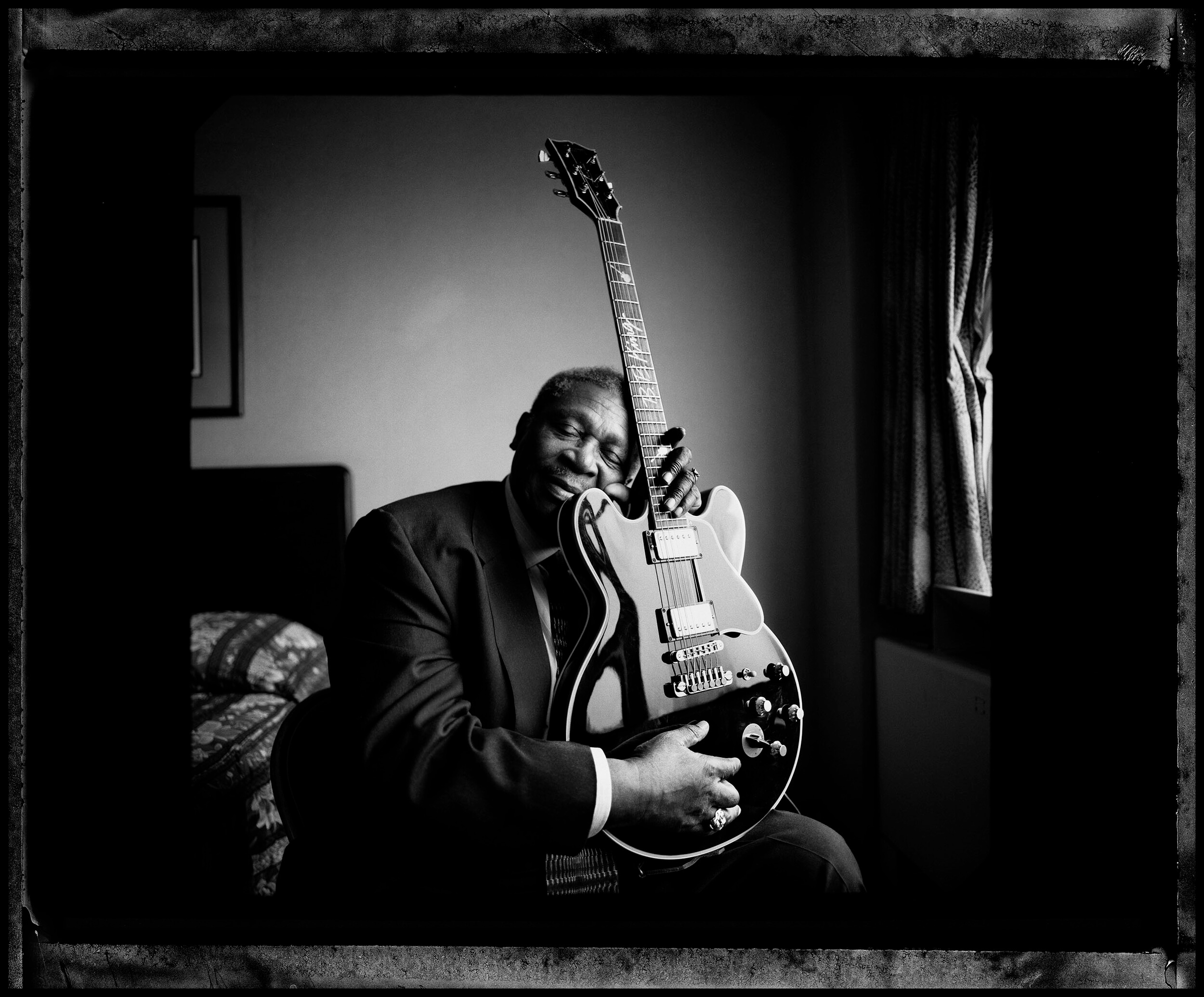
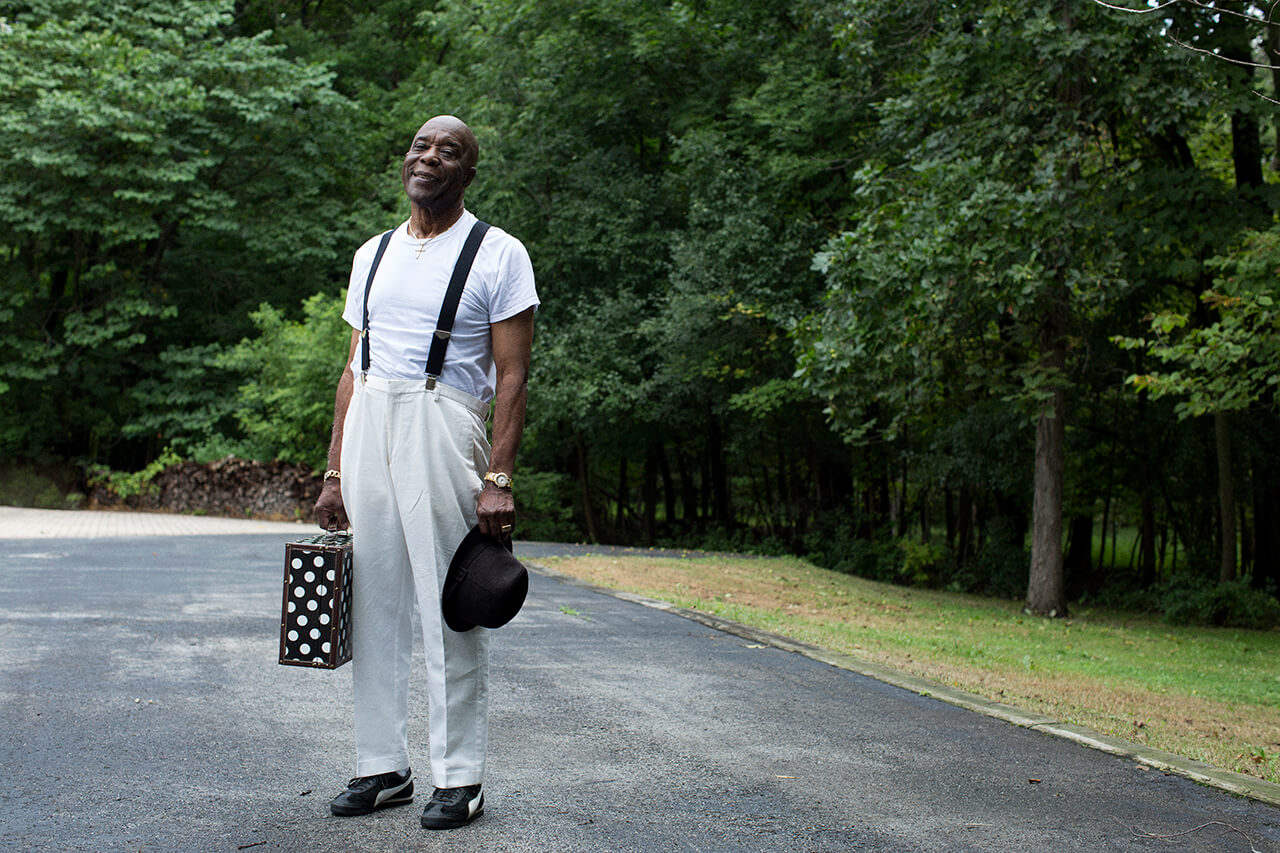
These harp skills he employs in the New York-based Tangiers Blues Band, formed in 1998 when Clinch, guitarist Chris Scianni and drummer Dave Borla discovered a mutual love for blues. “We met 25 years ago when I was photographing a band called Dangerman. They chose me as their photographer. I went in to meet with them, and I saw all these John Lee Hooker, Muddy Waters, Howlin’ Wolf photos on the wall. And I said, ‘Oh man, I’m a big blues fan too.’ They said, ‘Oh, come on up and we’ll have a jam.’ We started jamming and we haven’t stopped yet.
“They were a rock band. We all became friends. From that lineup, which was Chris Scianni and Dave Borla of Dangerman, they had a couple other friends — we had Huey from the Fun Lovin’ Criminals. The guy who fronts that band was playing lap slide with us. He loved the fact that he wasn’t the front man. He would just sit back and play lap slide. He’ll only sit in with us now and again. And then we have King, the singer in the band. Our bass player is Dave Sellar. Our drummer is Diego (Voglino).”
With a setlist that could include an Elvis Costello song, a Beastie Boys song, or a Bob Dylan song, the Tangiers Blues Band are not your routine 12-bar blues house band. As well as original tunes, they make their own mark on covers.
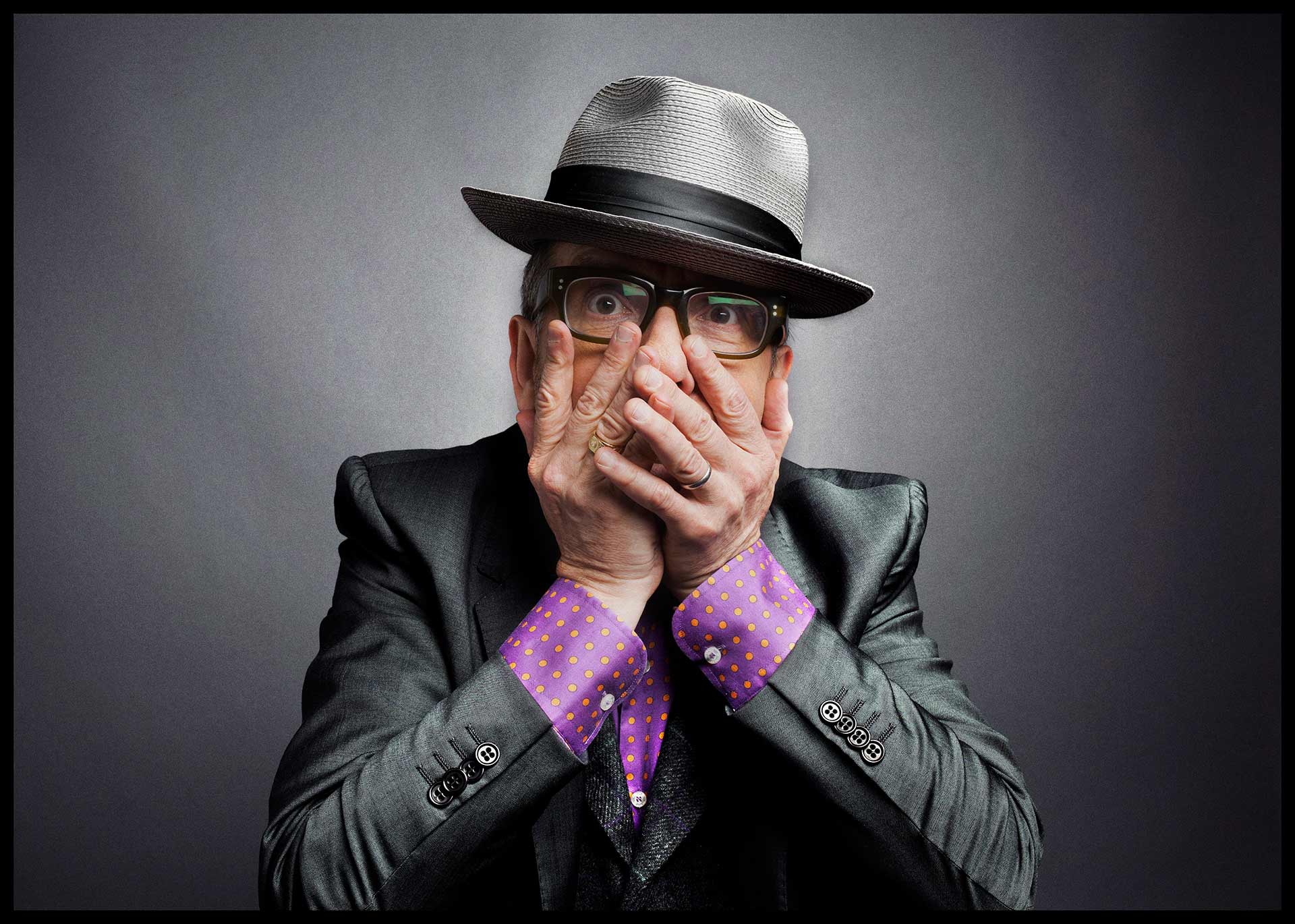
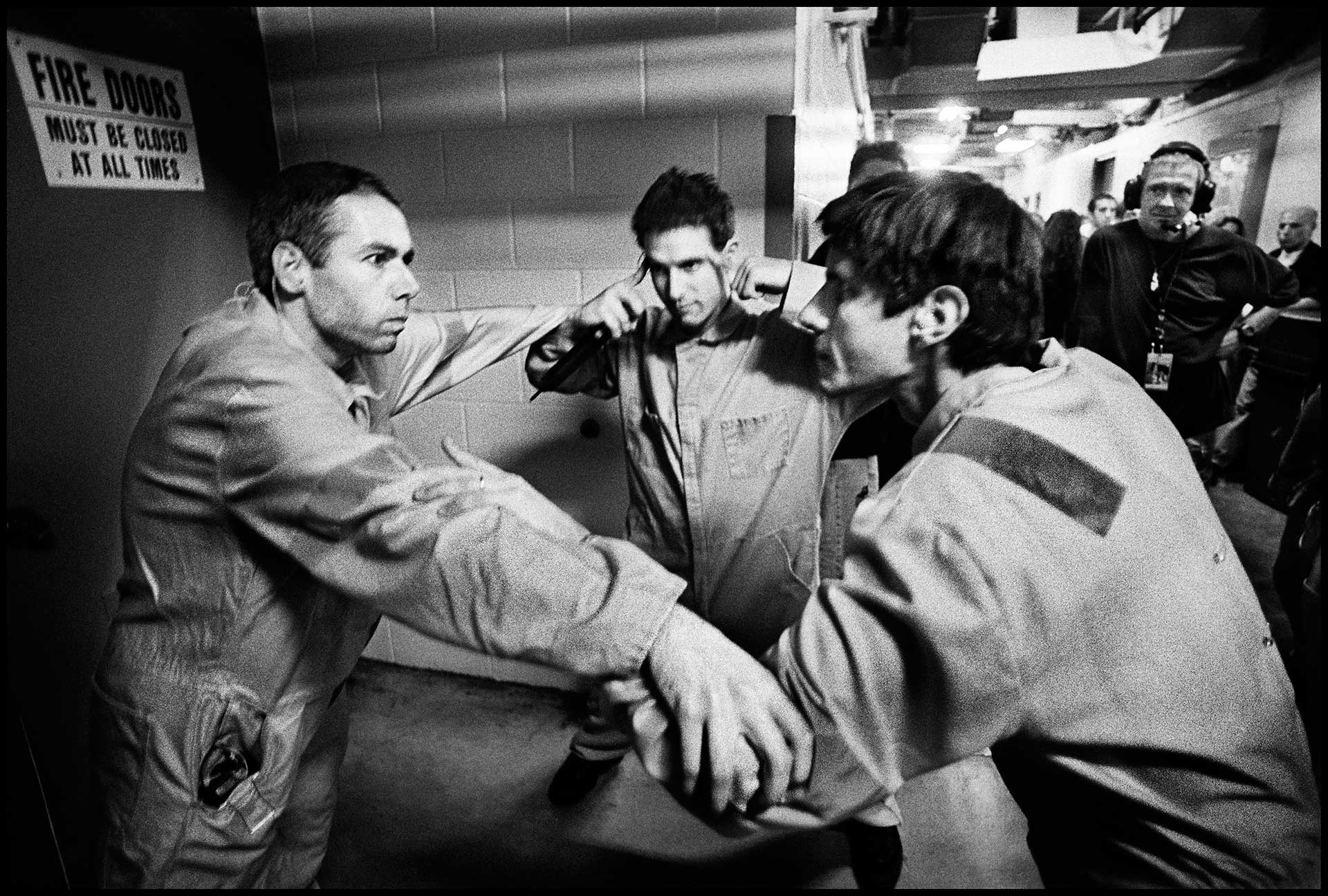
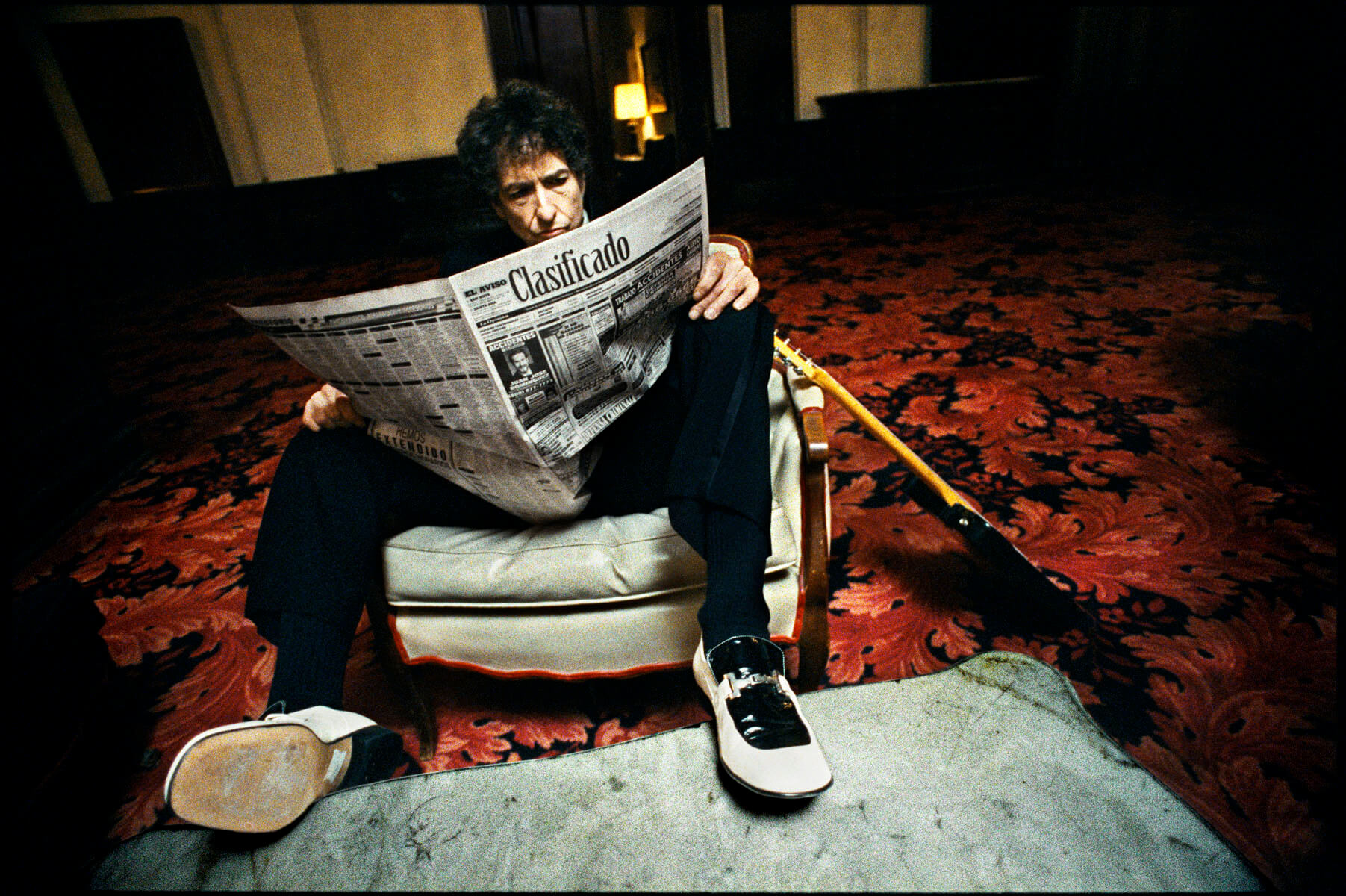
“We do ‘Fight For Your Right’ as blues. We’ll take ‘Don’t Judge a Book by its Cover ‘and we’ll segue into ‘Taking Care of Business’ or even Lady Gaga. It really is a fun band to see.” The relationships he’s cultivated with the artists he photographs have afforded the band the opportunity to open up for acts like the Gregg Allman Band.
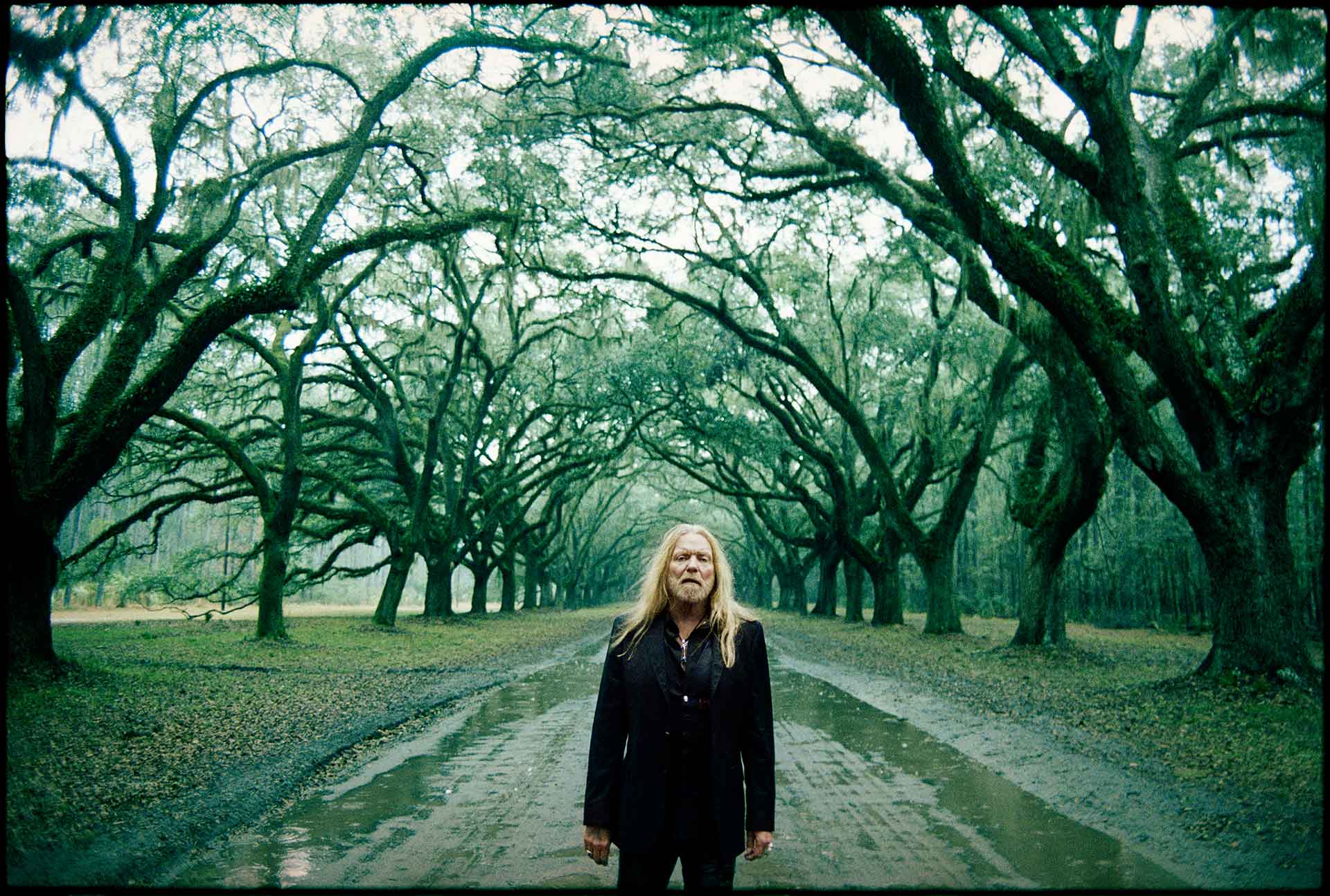
Many artists have sat in with the Tangiers Blues Band, including Jackson Browne, Eddie Vedder, Bruce Springsteen, and Gary Clark Jr. “A year ago coming up soon, we were the house band for the 50th anniversary of the Doors’ Morrison Hotel album in conjunction with the Morrison Hotel Gallery, which is a rock and roll photography gallery. Gary sat in with us for four or five songs, as well as Miley Cyrus and Robbie Krieger from The Doors. We did open up the Asbury Lanes in Asbury Park when they reopened the venue after years of decline. Long story short, Bruce came down and sat in with us on like four songs and nobody expected it.
“I subsequently sat in with Pearl Jam, Foo Fighters, Leon Bridges, and Jason Isbell. I’ve sat in with a lot of different bands. The harmonica is an instrument that obviously you can carry along with you anywhere you go. I don’t leave without my camera, and I usually have three or four harmonicas with me, so if anyone asks me I can find a way to sit in. I’m not the greatest harmonica player for sure, but I can play. It’s a great feeling, that musical conversation that you have with people. I feel like the fact that I’m a musician helps me in my relationships with the artists I photograph.”
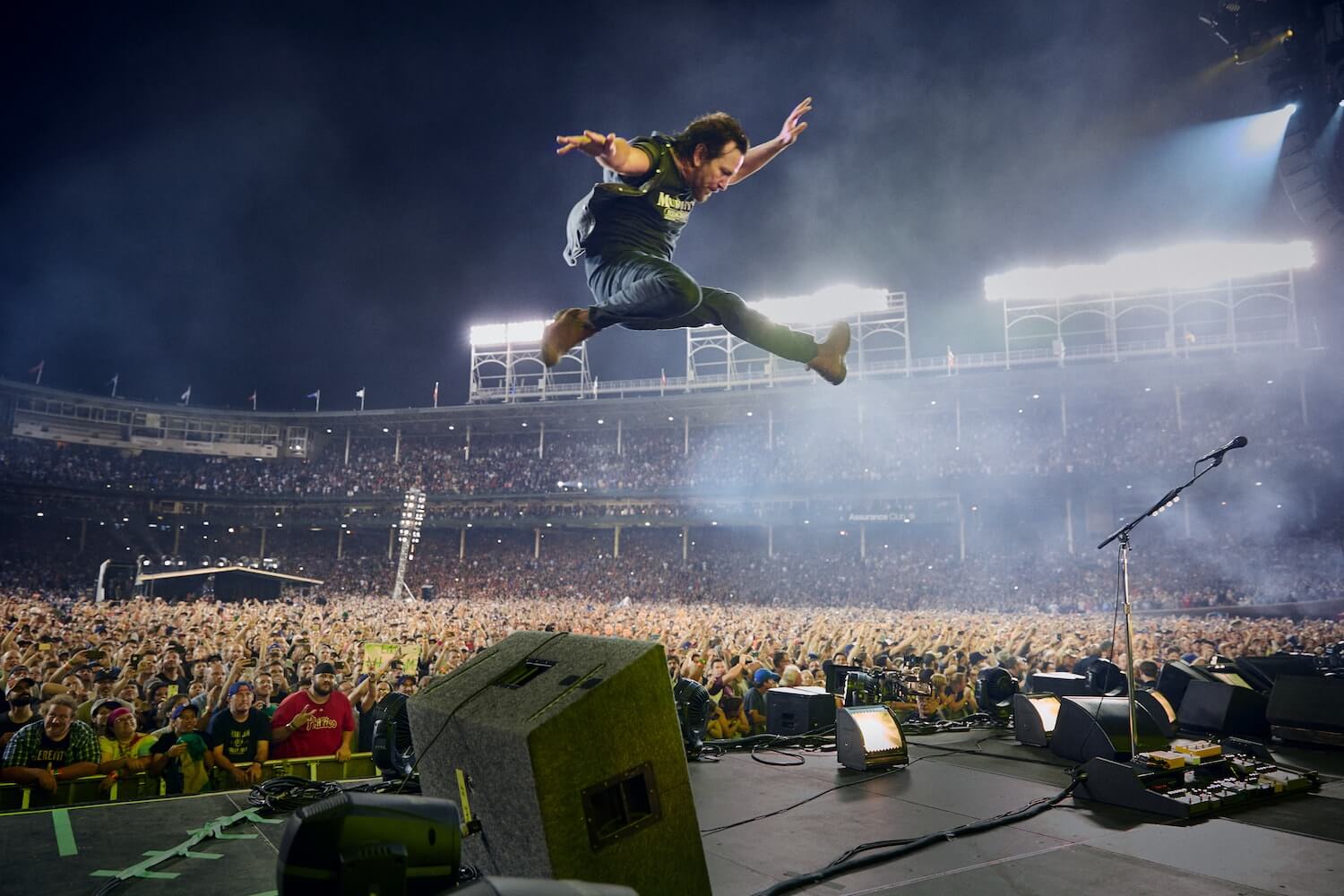
In addition to shooting many music videos, Clinch has made documentaries and short films featuring Leon Bridges, Pearl Jam, My Morning Jacket, and others. Some of his favorite photographers, like Robert Frank and Danny Lyon, started photographing as journalists and documentary photographers. Noticing that they started to make films, not having been educated in filmmaking specifically, Clinch just picked up the camera and started to make films himself.
“At a certain point I thought to myself, ‘I want to do that.’ I’m inspired by these cool little films that these people have made. So I decided to start doing some documentaries. Actually I started to do some music videos. I did a video for a friend of mine, Bob Delevante, for a song of his called ‘Penny Black.’ I just grabbed the camera, whatever I had available to me and we went out and filmed some stuff and cut it together. It was really cool, and I really enjoyed it and I loved the result that I got. And I decided that I was going to do a documentary on someone. I was like, ‘I gotta find the right person to do a documentary. I was hired to go photograph Ben Harper, and I ended up out at his grandparents’ music store, which is really like a museum. His grandfather was a luthier, subsequently Ben learned about building guitars and stringed instruments and knowing the ins and outs. At the time, both of his grandparents were still alive.
“At that moment when I met this guy, I thought, ‘This guy is going to be making music for a long time.’ And he was a young man. We were both young then. It was like 1998. If you were going to do a documentary on someone, how cool would it be to do it on this guy? Because he was only at the beginning of his journey. I did a film called Pleasure and Pain with Ben. And it was really a great experience. It was my first film, all different formats. I was introduced to a great editor named Sam Lee. Sam was really instrumental in helping me understand how to shoot and edit and how to hold the camera and let the world happen in the frame rather than chasing the world around with the camera, which is really important. Sadly, she passed away a couple years ago. I’m glad that we can honor, together, that film.”
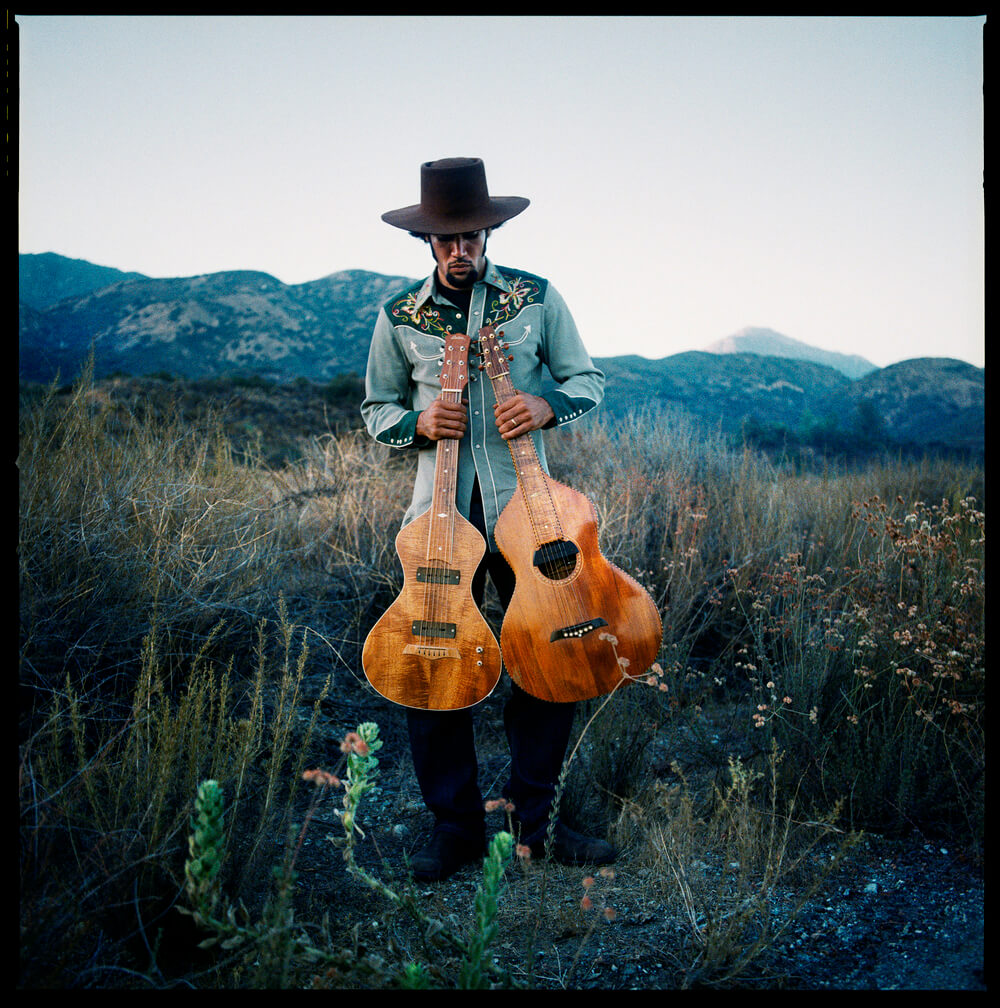
Clinch has also made concert films, such as Where The Light Is with John Mayer and Immagine in Cornice with Pearl Jam. Clinch’s most recent film, All I Can Say, is about Blind Melon frontman Shannon Hoon — a kindred spirit who, like Clinch, never went anywhere without his camera. This heartbreaking beauty of a documentary (streaming now) tells the story of Hoon’s life, which he recorded until the day he died, as told by him. “It’s all cut from his own footage,” Clinch explains. “My editor and co-director, Taryn Gould, is an incredible editor and storyteller. Our friend Colleen Hennessy was also instrumental in making the film. We made the film together and we’re really proud of it.”
Clinch uses the pandemic downtime to fine-tune his harmonica playing, which he believes has taken a turn for the better. “I travel around all the time, and I’m always stickin’ and movin’. I don’t really have time to sit and pay attention and practice. I basically was like, ‘Well, when we play I’ll practice.’ He’s been taking harmonica lessons online. I have been listening to these webinars put on by Dennis Gruenling. He’s an incredible harmonica player and an incredible teacher. He is a historian of harmonica playing. He also has these webinars where he brings on harmonica players to talk about playing and practicing and riffs and the history of the harmonica and stories about who these people have sat in with and met. From anyone super young to harp players like Brian Hurd from Daddy Long Legs to Charlie Musselwhite — Billy Branch and folks like that. I’ve been really getting into that, and subsequently have been listening a lot.
“I’m taking the things that I’m learning and I’m trying to listen. Because now I listen with a whole new ear. Because before when I would listen to something, I’d be like, ‘Well, how are they doing that?’ Now I’m like, ‘I know how they’re doing that now. I have to learn how to do that as well.’ So I listen to a lot of blues. I love Charlie Musselwhite and I’ve really been listening to Live at Mr. Kelly’s, the Muddy Waters album. It’s kind of been my (harmonica) masterclass at this moment in my life.”
What else does the guy who has photographed nearly every important musician listen to? “I listen to My Morning Jacket, Cage the Elephant, Bruce Springsteen… I go through some Bob Marley phases sometimes.” He continues, “Shemekia Copeland’s Uncivil War, Gary Clark Jr., Nathaniel Rateliff and the Nightsweats… I love the new Brittany Howard record, which I took the photograph of. The new Margo Price record.”
Are there any artists Clinch hasn’t photographed? “Kendrick Lamar. I have a pretty cool photo of Kendrick, but I would like a better session. I would say Dolly Parton is another one. Couldn’t be farther apart. I really wanted to photograph Prince.”
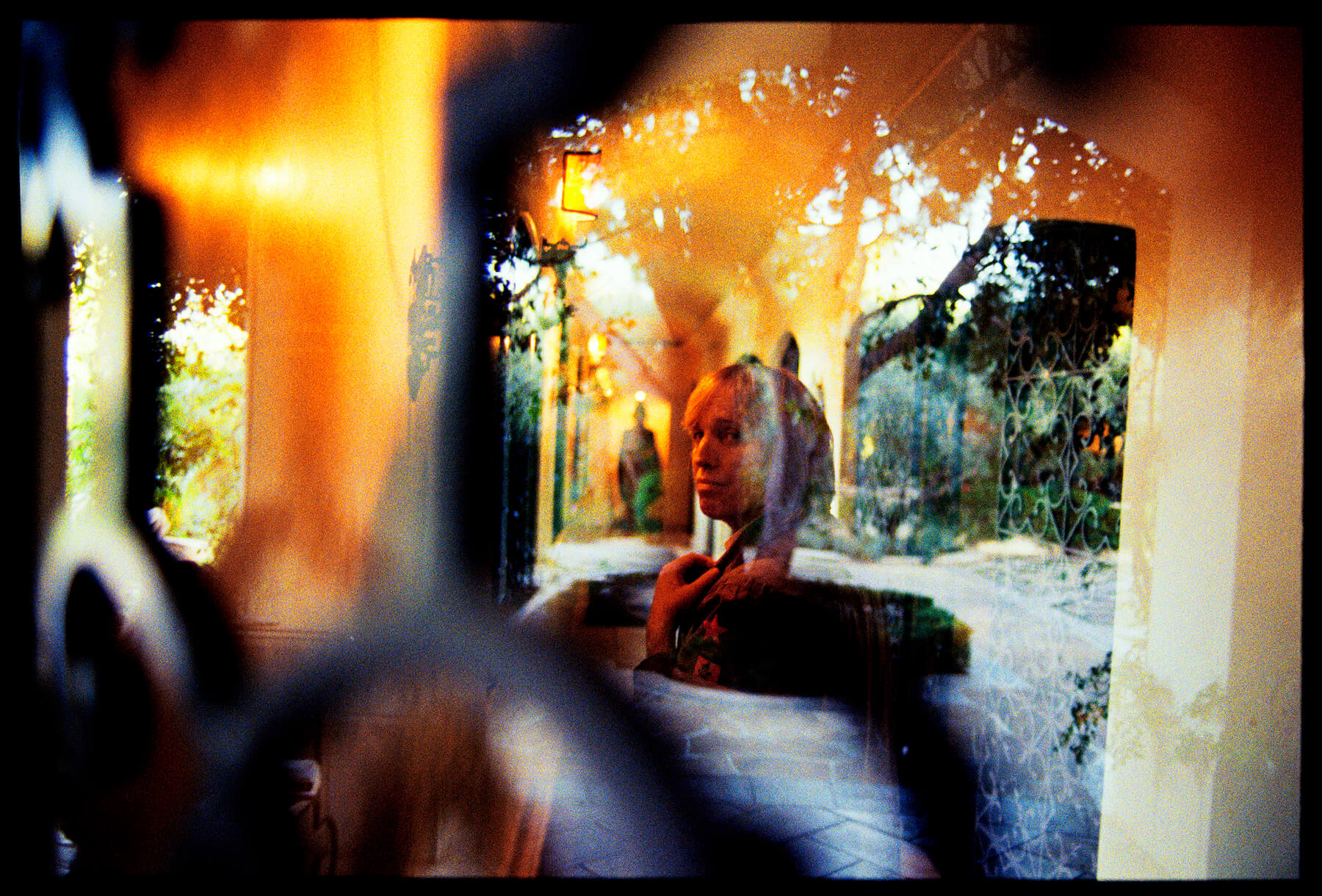
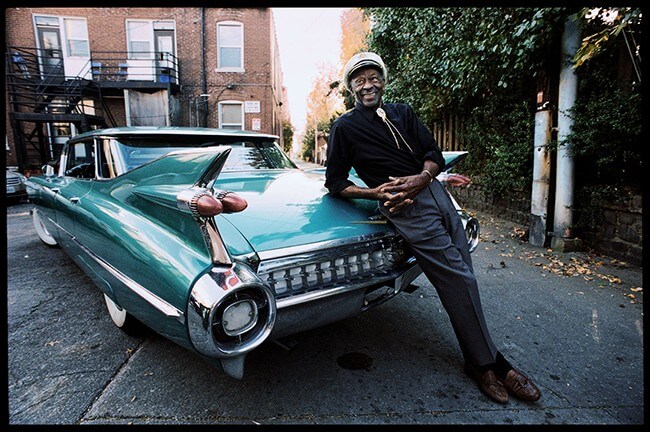
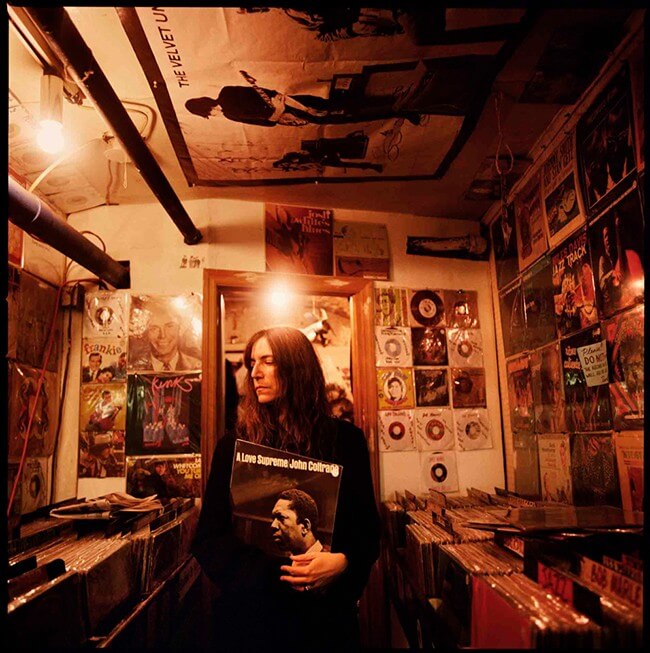
Asbury Park has come into its own as an art community, not least due to Clinch’s own contributions. People come from all over the world to visit his Transparent Gallery and Sea. Hear. Now — a music, art, and surfing festival of which he is a partner, promoter and photographer. The wildly successful festival, going strong in its third year, is put on by Clinch, Tim Donnelly, HM Wollman, and Tim Sweetwood. “It’s been amazing. We lost out on this year, but 2021 — if all things go like we hope we’ll have Pearl Jam, Avett Brothers, Patti Smith… I want to move forward. I feel good about this administration actually having a plan. I’m hoping that they’re able to implement it and they weren’t sabotaged too poorly coming into what they have to do here. I hope that we can all move forward and do the right thing and try to get live music back.”
Out of his gallery he hosts Transparent Tuesdays, a weekly livestream that matches local performers to their favorite artist by means of a photograph. “What we do is feature local Asbury Park — or close to — artists. They come in, and we decide ahead of time, ‘What artist are you inspired by?’ For example, our friend Tara Dente said, ‘I just love Radiohead. I want to play this Radiohead song.’ So we talk about the inspiration that this iconic artist has on this local person who are friends of mine that play at the gallery.
“We talk about the photograph I took and my experience with this artist and how I came to get the assignment and why we shot in the place that we were or where I was when I documented it. Des Spinks from Des and the Swagmatics did an Erykah Badu song. We had Dan and Dave Apy from Mercury Brothers do a Temple of the Dog song. That was the idea: match an artist with their favorite and let’s talk about it. Let’s talk about your inspiration, how I took the photo, location… It’s been really cool.”
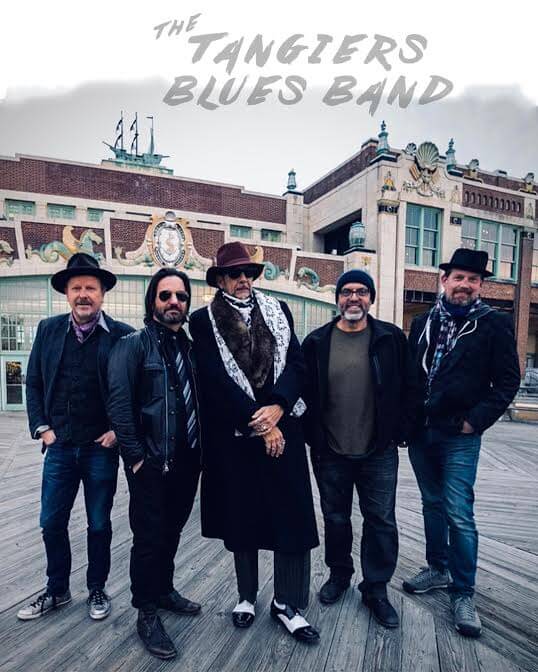
The next installment in the Locals and Icons series sees the Tangiers Blues Band in conversation with Danny Clinch about three iconic photographs: Johnny Cash, Bob Dylan, and the Beastie Boys. He tells the backstory behind the image, and The Tangiers Blues Band covers a song by the artist in the photo. Tune in to American Blues Scene‘s Facebook and Transparent Clinch Gallery’s Facebook every Tuesday at 8pm EST. For prior episodes, tune in here.


